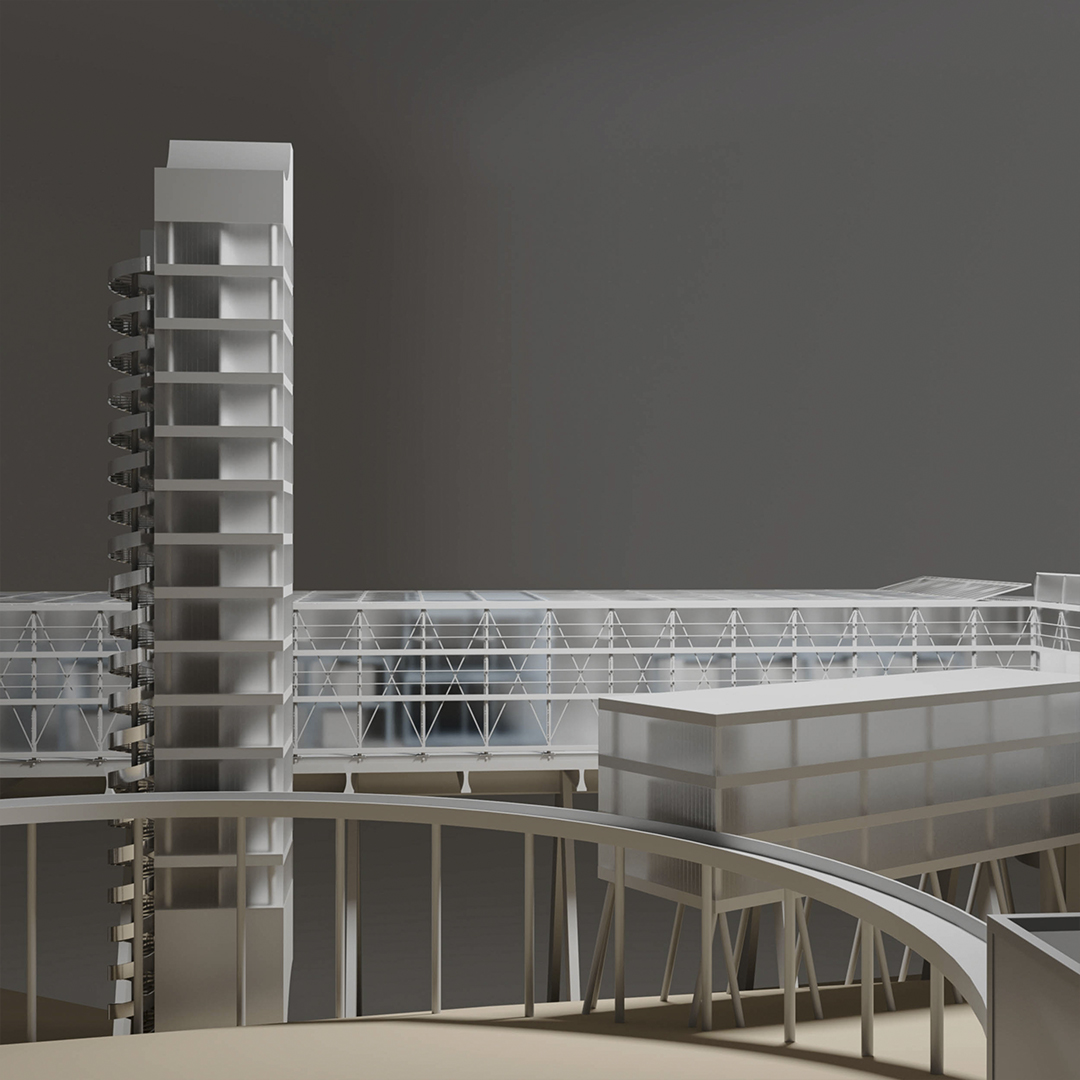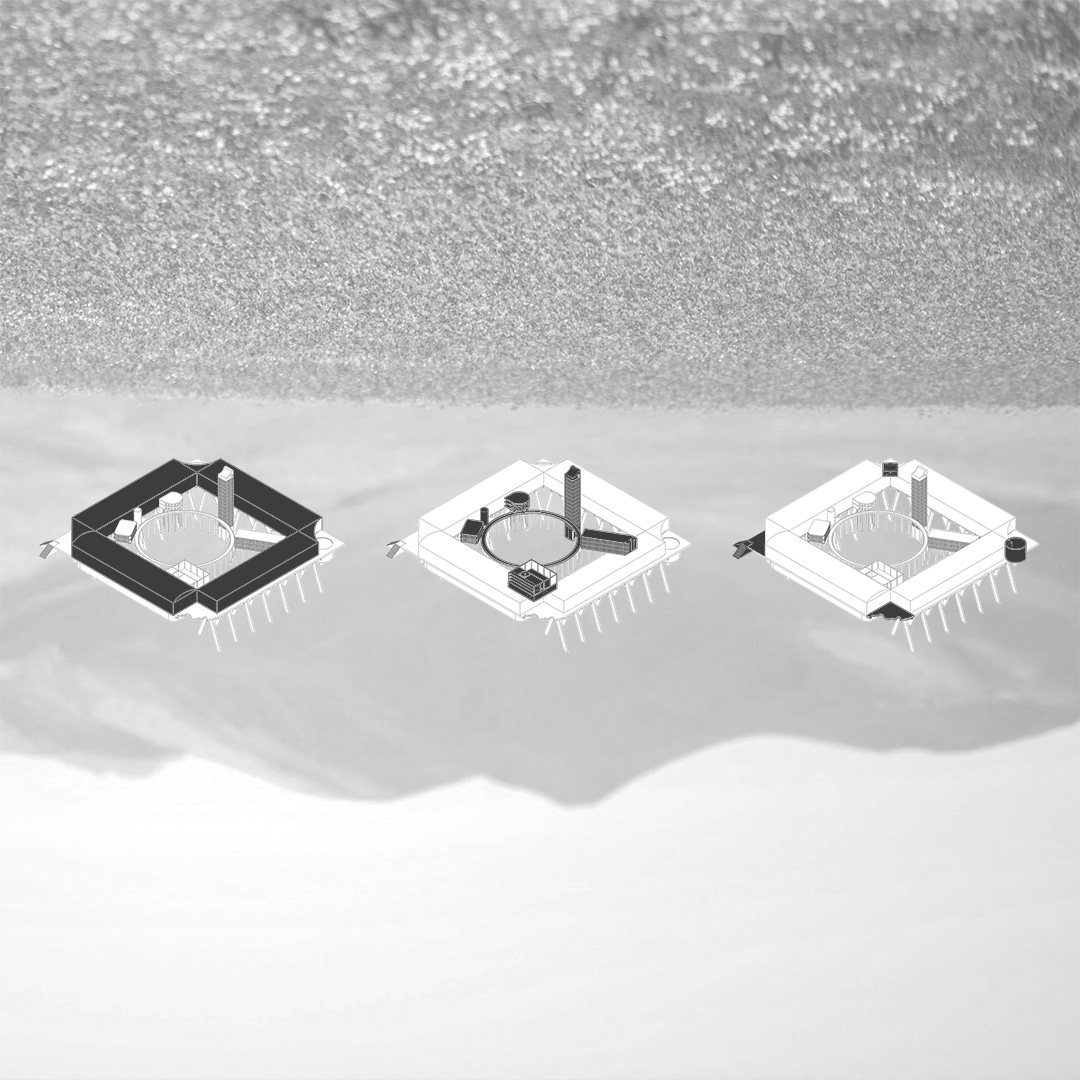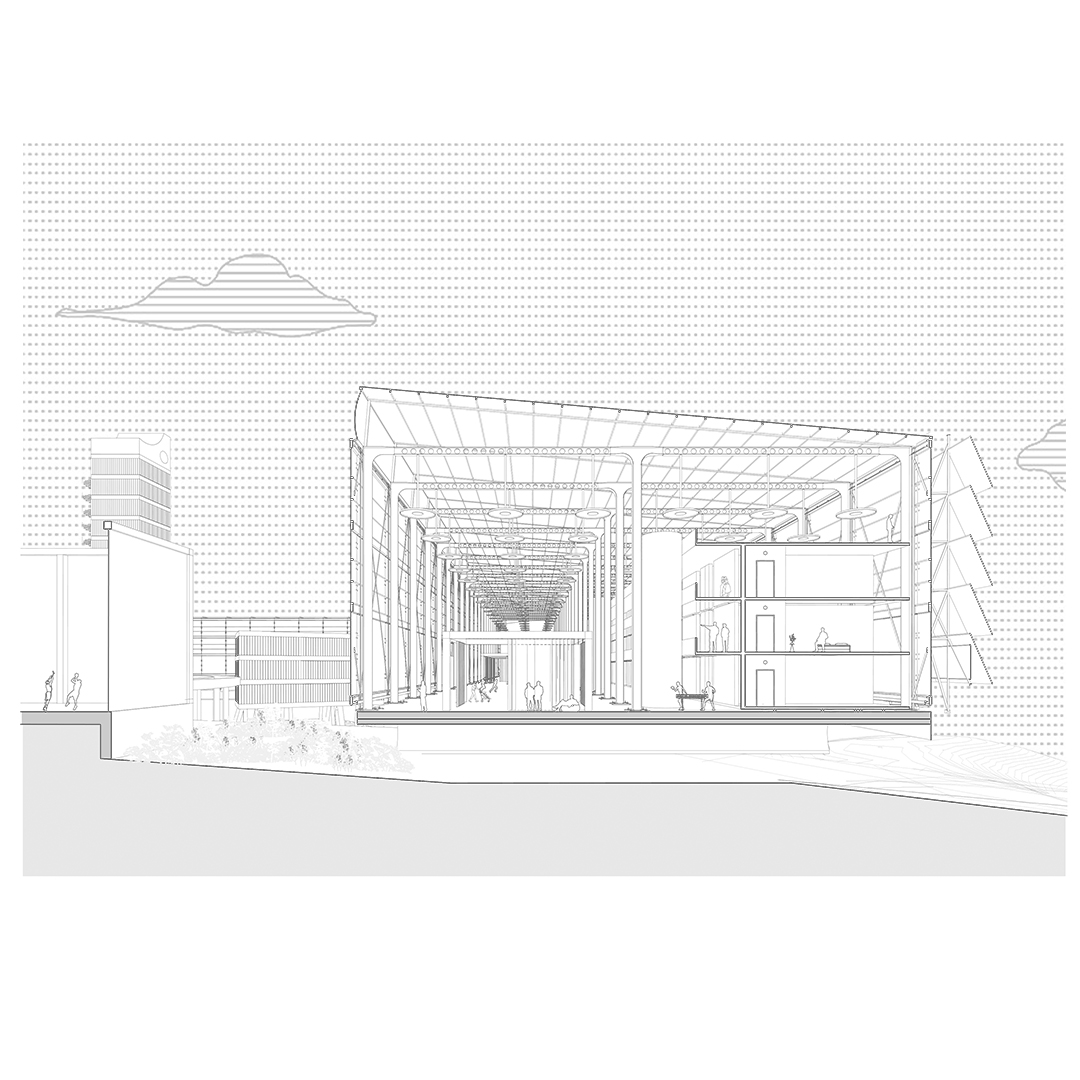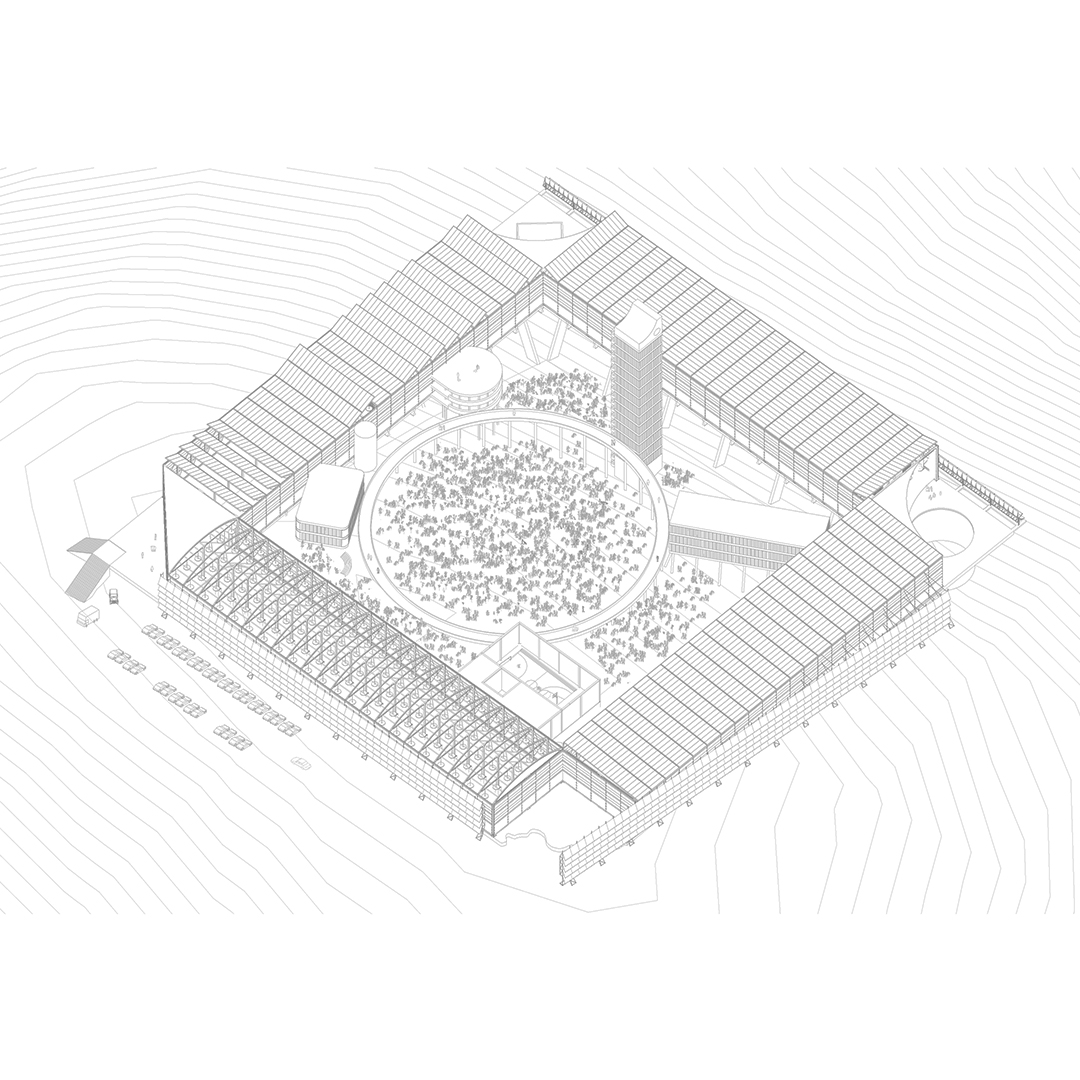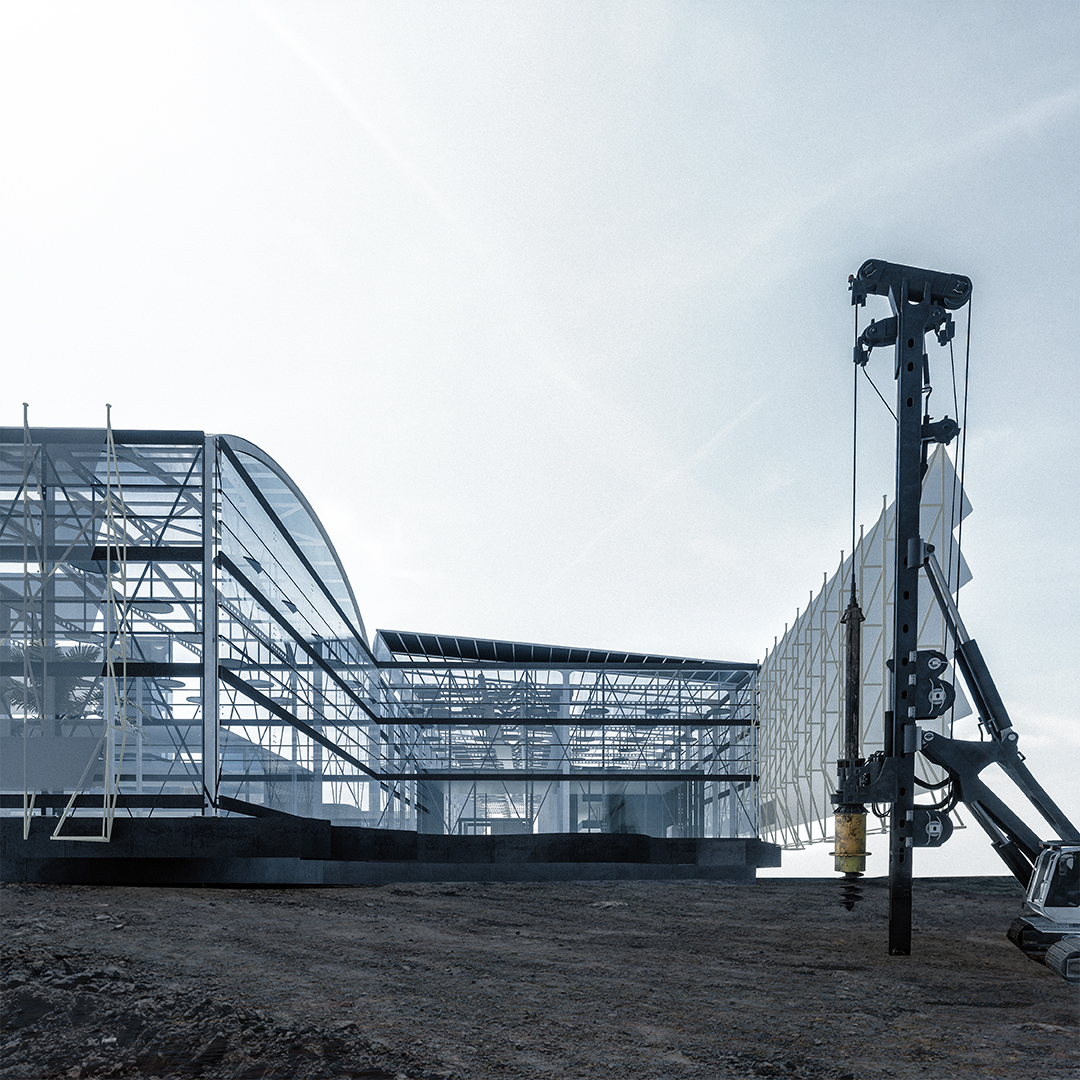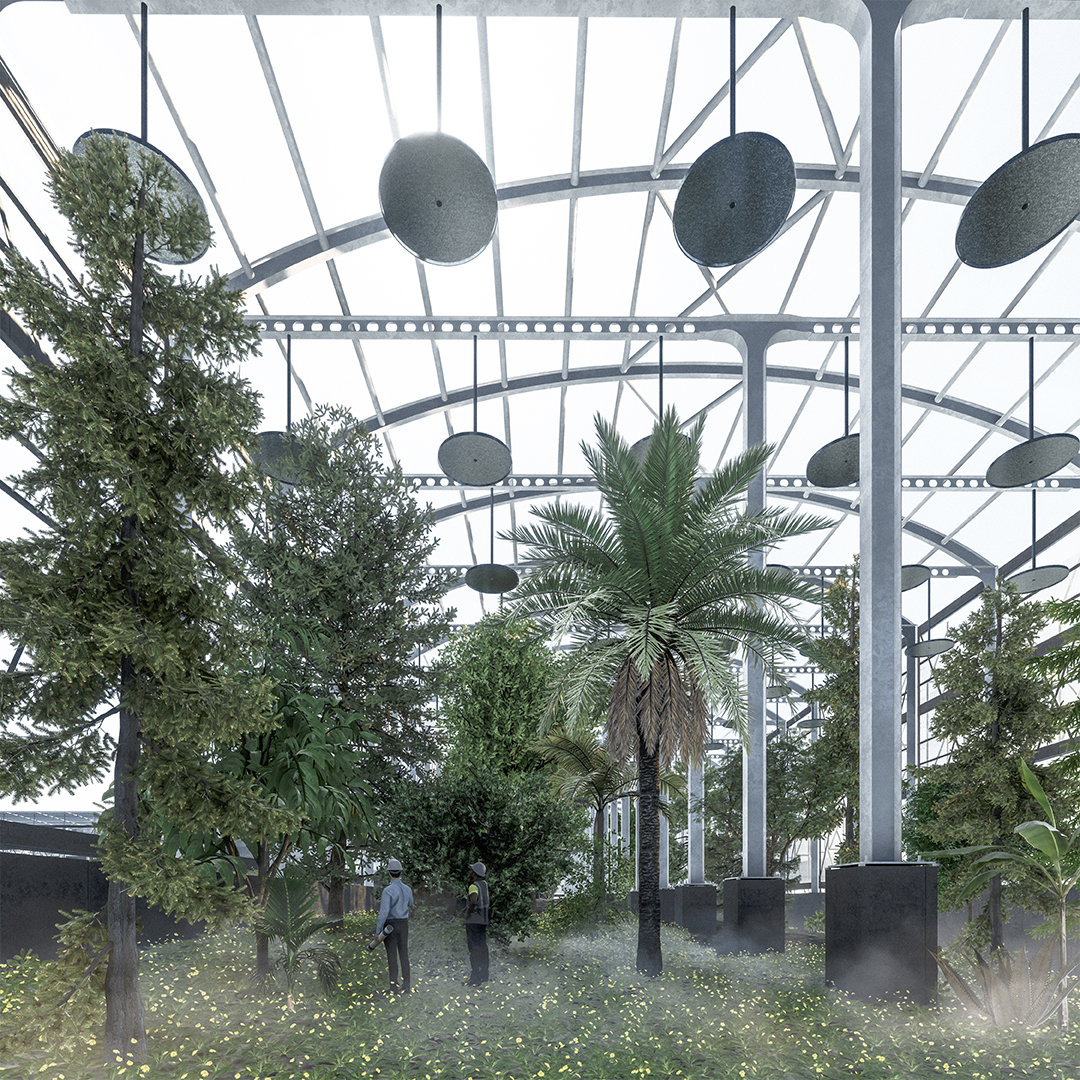Matías Rivera Riquelme
Project that condenses various infrastructural characteristics and that allows for the speculative possibility of a territorial research megastructure for post-extractive contexts in the Atacama Desert.
The proposal for a Desert Bloom Research Center aims to understand the role that architectural design may have in articulating the post-extractive landscape as fundamental, especially if it is intended to face the contemporary environmental challenges that the planet is going through with effective agency. Both in its re-linkage with a highly fragmented past, and with a future that requires urgent preservation measures and conceptual reformulation of the remaining non-urbanized territories.
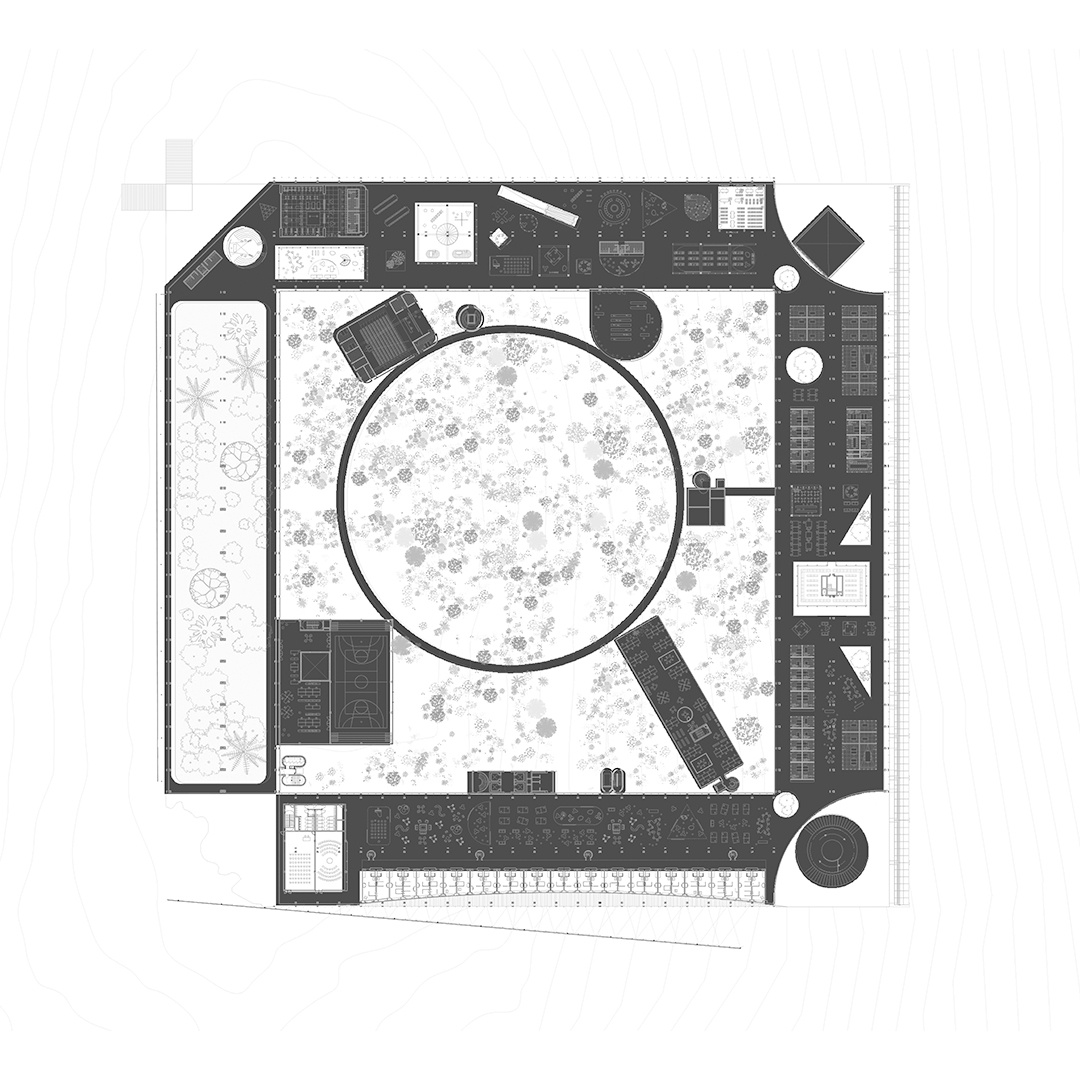
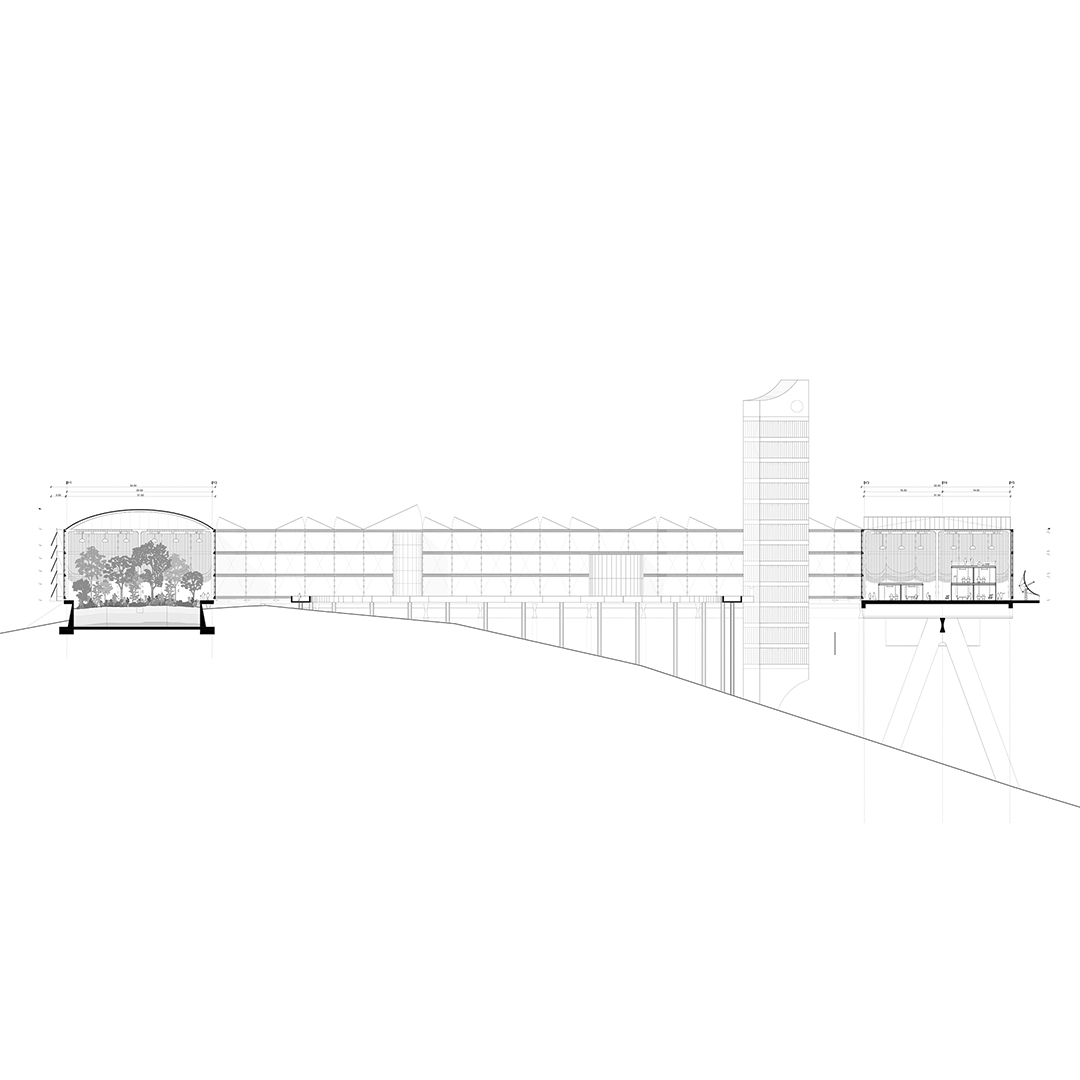
The project consistently deploys a series of material operations aligned with the concepts of sustainability and reciprocity that allow the formulation of an architectural proposal in constant search for the lowest material intensity possible, an approach where contingent ecosystems have been observed and investigated in depth along with the energy requirements of the territory intervened- Tools appertaining the landscape architecture disciplines are simultaneously incorporated and adapted to the infrastructural strategies deployed in the form of a single building with high programmatic and resources management intensity.
The site chosen to host the Desert Bloom Research Center is the former El Tofo iron mine, located inland from the Chungungo coastal cove in Coquimbo. In its double condition of ‘open pit’ pillaged territory and fog oasis (camanchaca) that continuously makes possible a phenomenon analogous to that of the desert bloom on the region’s Atacama valleys. The project proposes to redirect a hypothetical surplus in production, energy and research at the service of rebuilding the area affected by the extraction of iron, reconditioning the soil and enhancing and expanding its original ecosystems.
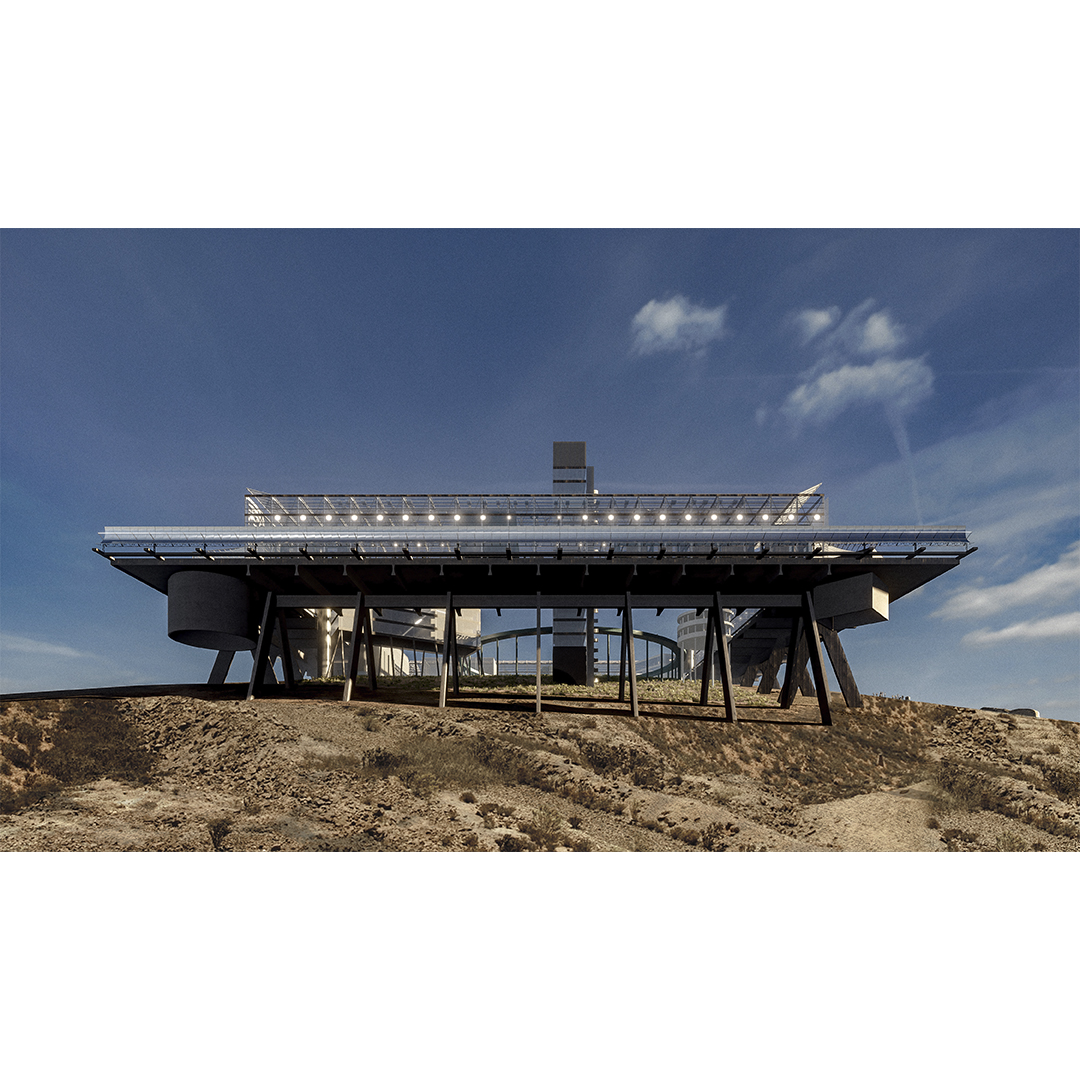
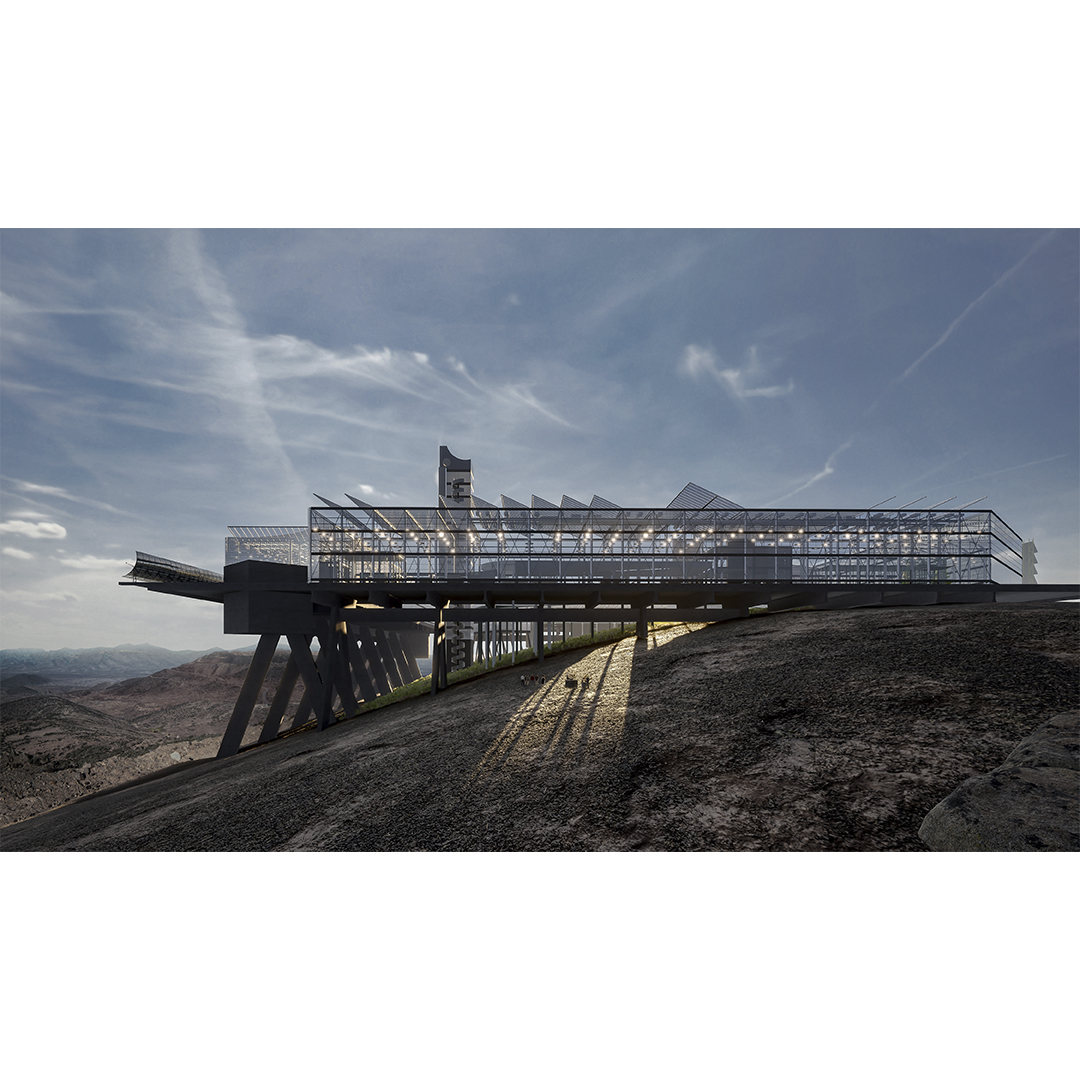
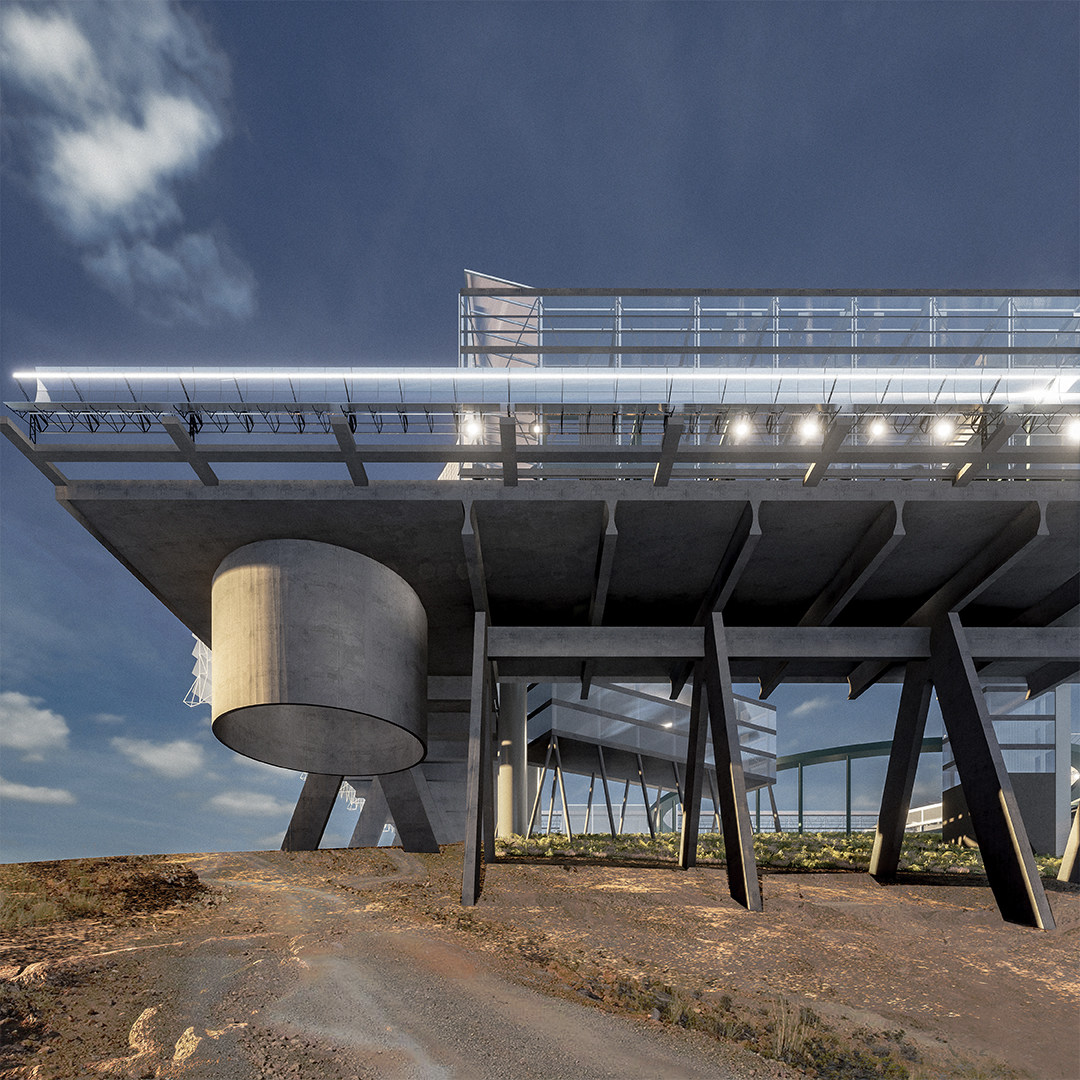
The building thus positions itself as a ‘territorial condenser’, holding a character that is deeply rural, above a public or metropolitan condition from which it is ultimately excluded. Although it boasts a marked formal autonomy, it aspires at the same time to a deep interaction and interdependence with the pre-existing social and ecosystem conditions and processes. The project hopes to become a viable model to implement in various similar sites in areas of Chile, Peru, Bolivia and northern Argentina- all under high extractive pressure that tends to accelerate in recent years.
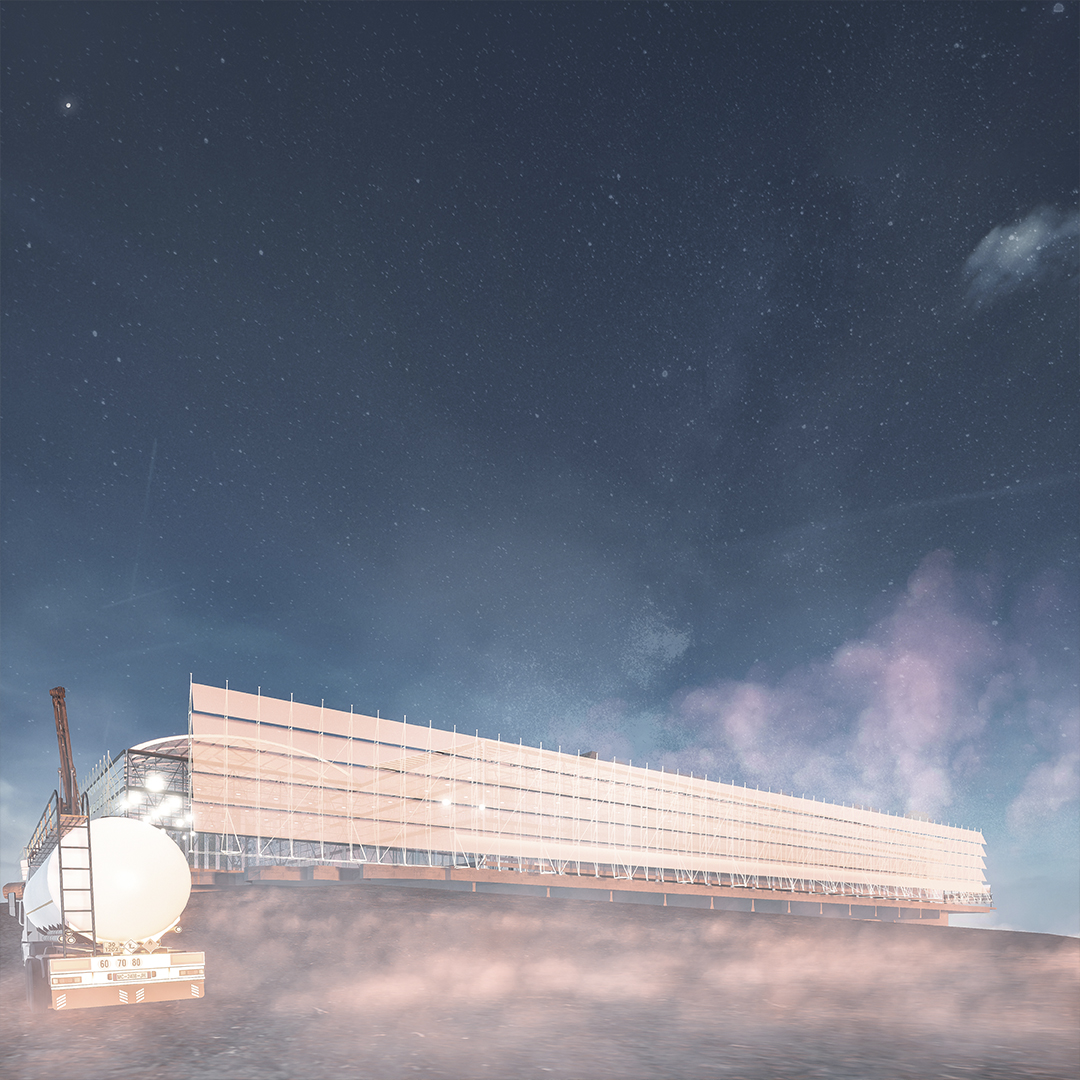
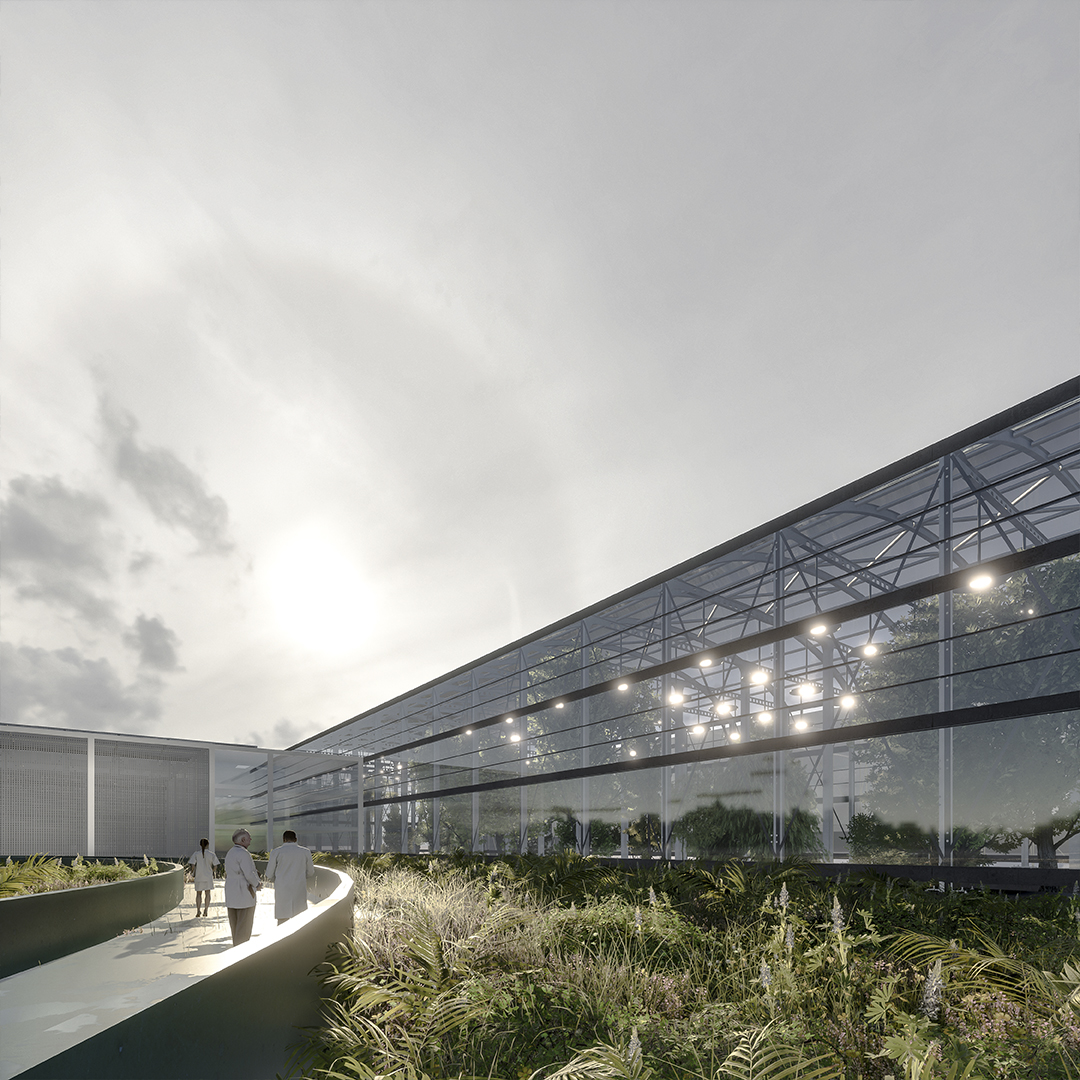
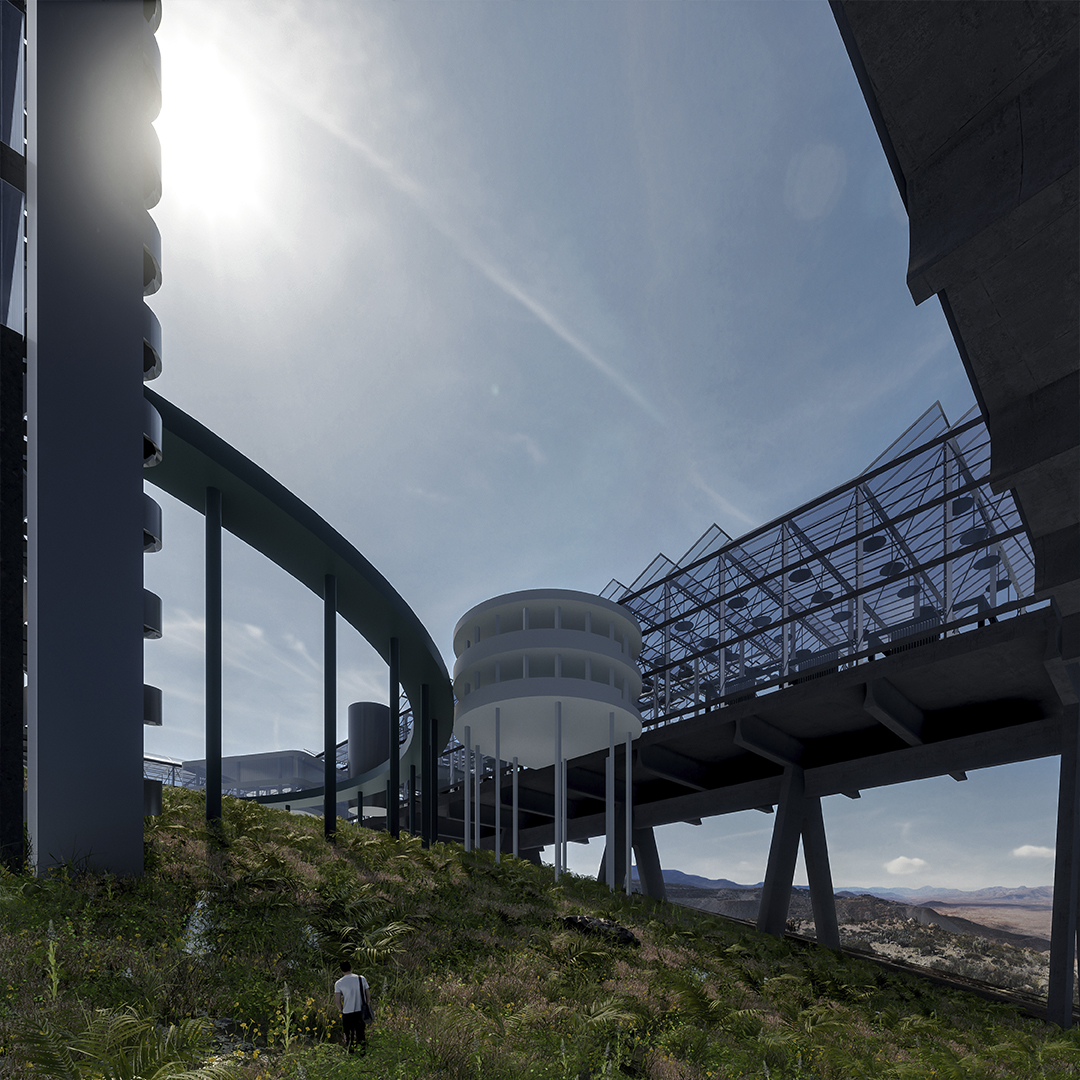
The strategies deployed within the complex revisit the old typology of the cloister once again, but on a deliberately exaggerated scale. In the particular case of the research center, the center space will play the role of testing ground of a series of applied studies on the recomposition of the post-extractive desert landscape of the former iron mine El Tofo. The programs overlap indoor and outdoor conditions with intensive and extensive activities, which stimulate the uses and scope of research and leisure within the scientific complex.
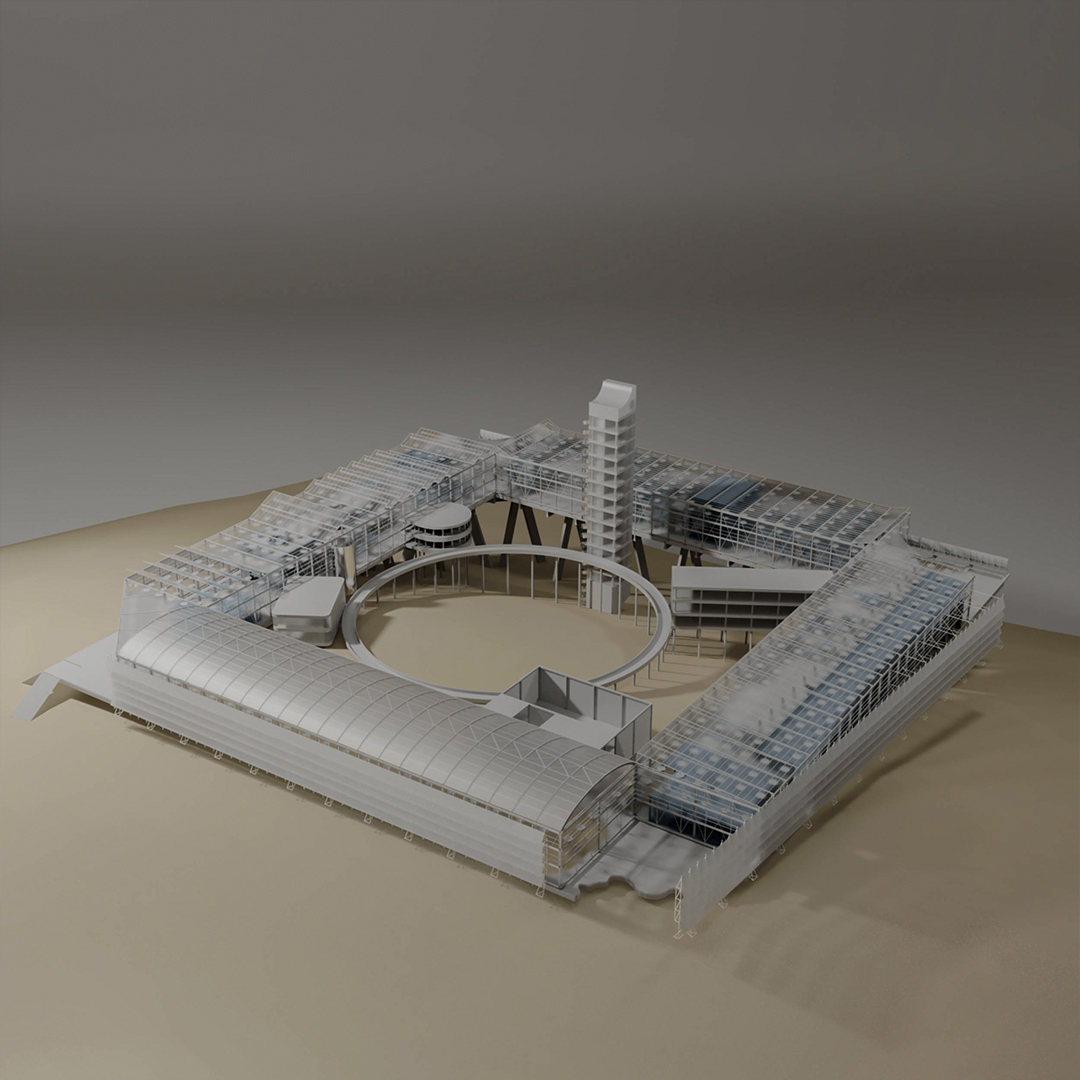
The project enties structurally equivalent buildings that aspire to a kind of ‘ready-made tech’ using highly available industrial components and indistinctly used by mining extraction structures. With it getting rid of some design urges to allow not only spatial and programmatic flexibility, but also ecosystem adaptability over time through the flexible replacement of construction technologies.
Author: Matías Rivera Riquelme.
Location: Coquimbo, Chile.
University: Universidad de Buenos Aires.
Year: 2023
